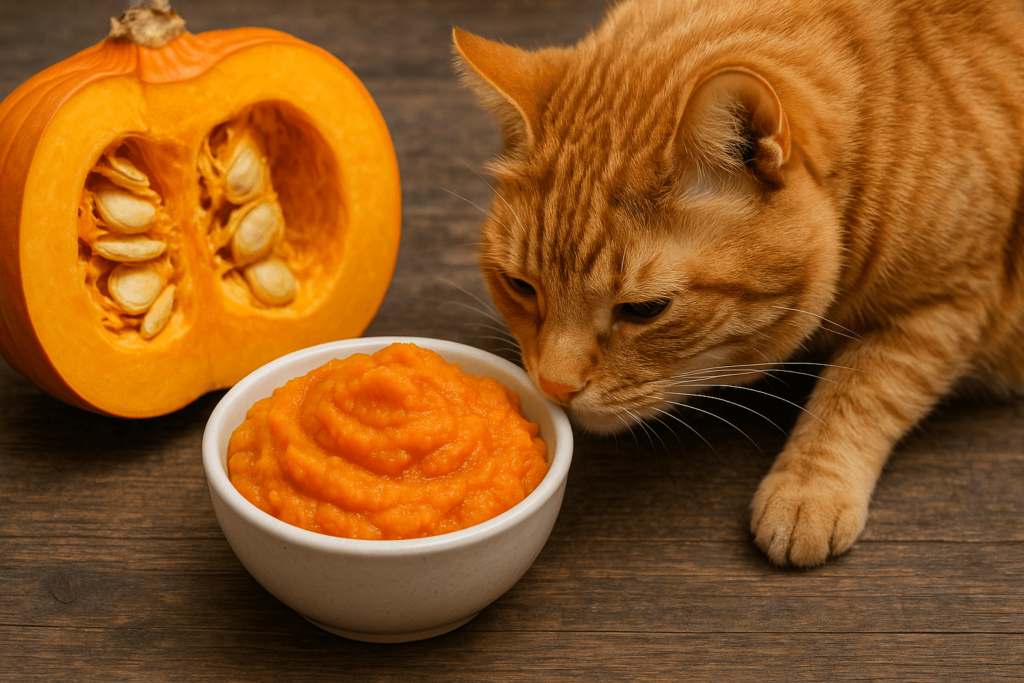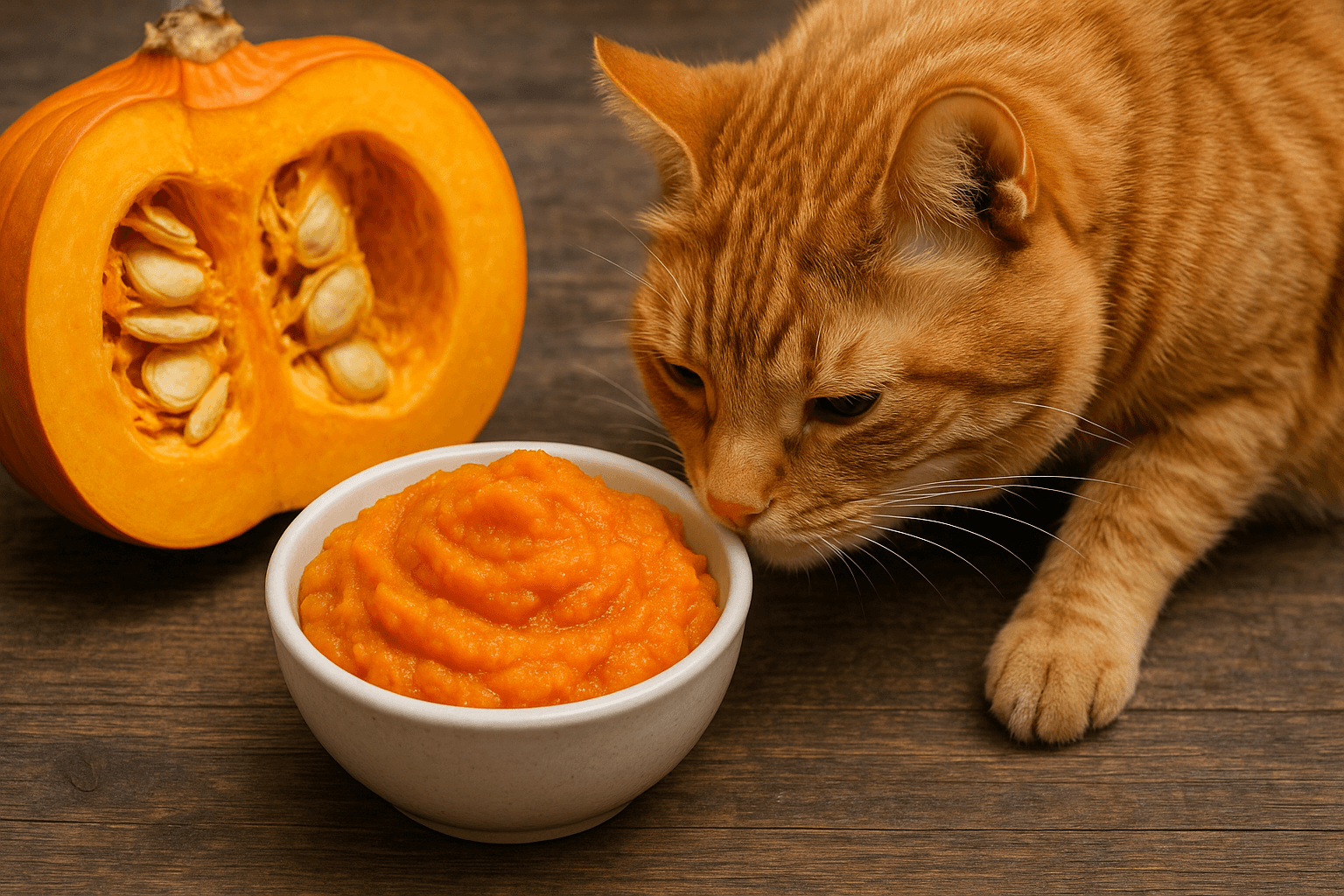Pumpkin Puree for Cat Constipation: A Natural Remedy Backed by Vet Wisdom
When your cat stops using the litter box, it’s more than just inconvenient—it’s alarming. Constipation in cats isn’t a minor hiccup; it’s a red flag that something’s off. And while medications exist, one of the most gentle, effective, and widely recommended solutions is surprisingly simple: plain pumpkin puree. This humble squash isn’t just for pies—it’s a fiber-rich, vet-approved ally for your feline’s digestive health.
Why Constipation Happens in Cats (And Why Pumpkin Helps)
Constipation in cats is rarely random. It’s a symptom—often linked to diet, hydration, or underlying illness. Pumpkin puree works because it addresses the root causes, not just the signs. Here’s how:
High Soluble Fiber Content:
Pumpkin’s fiber absorbs water in the intestines, softening stool and making it easier to pass naturally.Gentle on the Digestive System:
Unlike laxatives, pumpkin doesn’t irritate the gut—it gently encourages movement without cramping or urgency.Hydration Support:
While not a liquid, pumpkin’s moisture content adds hydration where it’s needed most—in the colon.Low in Calories and Sugar:
Plain, unsweetened pumpkin won’t spike blood sugar or contribute to weight gain, making it safe for diabetic or overweight cats.Nutrient-Rich:
Packed with vitamins A, C, and E, plus potassium and antioxidants, pumpkin supports overall gut and immune health.
When your cat is struggling to poop, pumpkin isn’t a magic fix—but it’s a safe, natural first step that many veterinarians recommend before reaching for stronger interventions.

How to Use Pumpkin Puree Safely for Your Cat
Not all pumpkin is created equal. Using the wrong kind can do more harm than good. Here’s exactly how to do it right:
Use 100% Pure Pumpkin Puree Only:
Never use pumpkin pie filling—this contains sugar, spices, and preservatives that can upset your cat’s stomach.Start with 1/2 to 1 Teaspoon Per Meal:
For an average adult cat, begin with a small amount mixed into their wet food once or twice daily.Mix It Into Their Food:
Hide the pumpkin in their favorite wet food or canned tuna (in water, not oil) to make it more appealing.Avoid Canned Pumpkin Pie Spice or Flavored Varieties:
Even “natural” flavors like cinnamon or nutmeg can be toxic to cats in large amounts.Monitor for 24–48 Hours:
If there’s no improvement—or if diarrhea develops—stop and consult your vet immediately.
Pumpkin is a supportive tool, not a cure-all. It works best when paired with adequate water intake and appropriate feeding habits.
Check this guide 👉Can Cats Eat Pumpkin? Best 7 Expert Tips!
Check this guide 👉Can Cats Eat Raw Meat? Best 7 Expert Tips!
Check this guide 👉Can Cats Eat Vitamin D? Best 7 Expert Tips!
| Benefits of Pumpkin Puree | Risks of Improper Use |
|---|---|
| Softens hard stools naturally with soluble fiber | Pie filling causes vomiting, diarrhea, or pancreatitis |
| Adds moisture without altering calorie intake | Too much fiber leads to loose stools or gas |
| Supports healthy gut bacteria and digestion | Masking symptoms delays diagnosis of serious illness |
| Safe for long-term use in moderation | Used instead of vet care for chronic constipation |
| Rich in vitamins A, C, E, and potassium | Given to cats with kidney disease without vet approval |
Common Causes of Constipation in Cats (Beyond Diet)
Pumpkin helps—but it won’t fix everything. Constipation often stems from deeper issues. Recognizing these helps you know when pumpkin is enough… and when it’s not.
Dehydration:
Cats are poor drinkers. Dry food diets, lack of fresh water, or warm environments reduce moisture intake, hardening stool.Hairballs:
Excessive grooming leads to fur buildup in the intestines, especially in long-haired cats or those shedding heavily.Litter Box Aversion:
A dirty, noisy, or poorly placed box can cause cats to hold in stool out of stress or avoidance.Obesity or Arthritis:
Overweight or elderly cats may struggle to squat comfortably, leading to delayed elimination.Underlying Diseases:
Kidney disease, hyperthyroidism, or intestinal blockages can all cause chronic constipation—pumpkin won’t cure these.
If your cat is constipated more than once a month, or seems in pain when trying to defecate, pumpkin alone isn’t enough. A vet visit is non-negotiable.
How Much Pumpkin Should You Give? A Simple Guide
Quantity matters. Too little does nothing. Too much causes diarrhea. Here’s a clear, safe dosing chart based on weight and severity:
Kittens (under 5 lbs):
1/4 teaspoon once daily for 2–3 days max.Small Adult Cats (5–10 lbs):
1/2 teaspoon twice daily for up to 48 hours.Medium to Large Cats (10–15 lbs):
1 teaspoon twice daily for 2–3 days.Severe Constipation (veterinarian-approved):
Up to 1.5 teaspoons twice daily, but only under supervision.
Always start low. Observe your cat’s stool consistency, energy level, and appetite. If they’re pooping normally after 48 hours, stop the pumpkin. Don’t overuse it as a daily supplement unless directed by your vet.
When Pumpkin Isn’t Enough: Signs You Need a Vet
Pumpkin is a first-line tool—but it’s not a substitute for medical care. Watch for these warning signs that mean it’s time to call your vet immediately:
No bowel movement for 48+ hours:
This is a medical emergency. Fecal impaction can become life-threatening.Straining without producing stool:
Repeated trips to the litter box with little or no output signals a blockage.Vomiting, lethargy, or loss of appetite:
These indicate systemic illness, not just constipation.Blood in stool or around the anus:
Could point to tears, inflammation, or tumors.Abdominal bloating or pain when touched:
A hard, distended belly is a red flag for obstruction or megacolon.
If your cat shows any of these, don’t wait. Delaying care can lead to irreversible damage.
DIY Pumpkin Puree: How to Make It at Home (Safely)
Want to avoid store-bought cans? Making your own is easy—and ensures zero additives.
Choose Fresh, Organic Pumpkin:
Use sugar pie pumpkin, not carving pumpkins (they’re watery and bland).Wash and Cut:
Remove stem, cut into chunks, and scoop out seeds.Roast at 350°F (175°C):
Bake for 45–60 minutes until fork-tender.Blend Until Smooth:
Use a food processor or blender. Add a splash of water if needed.Cool and Store:
Refrigerate for up to 5 days or freeze in ice cube trays for longer use.
Homemade puree is fresher and purer—but store-bought 100% pure pumpkin (in a BPA-free can) is equally safe and far more convenient.
Other Natural Remedies That Work Alongside Pumpkin
Pumpkin is powerful—but it’s even more effective when combined with other supportive measures:
Increase Water Intake:
Use a cat water fountain, add water to wet food, or offer bone broth (no salt or onion).Switch to Wet Food:
Wet food is 70–80% water. It hydrates while feeding—critical for preventing recurrence.Gentle Abdominal Massage:
Use warm hands to make small circles on your cat’s belly for 2–3 minutes, twice daily.Encourage Movement:
Play with a feather toy or laser pointer to stimulate bowel activity.Add Psyllium Husk (Vet-Approved):
A tiny pinch of unsweetened psyllium can boost fiber—but only under professional guidance.
Never combine multiple remedies without consulting your vet. Overdoing fiber or hydration can backfire.
FAQ: Pumpkin Puree for Cat Constipation
Can I give my cat canned pumpkin every day?
Not unless advised by your vet. Daily use can lead to nutrient imbalance or chronic diarrhea. Use it as a short-term remedy.
Is pumpkin safe for diabetic cats?
Yes—plain pumpkin has a low glycemic index and is often recommended for diabetic cats to regulate digestion without spiking blood sugar.
My cat won’t eat pumpkin. What do I do?
Try mixing it with tuna juice, chicken broth, or a tiny bit of cooked chicken. Warm it slightly to enhance smell. If they still refuse, skip it and focus on hydration and wet food.
Can pumpkin help with diarrhea too?
Surprisingly, yes. The soluble fiber in pumpkin can absorb excess water in the colon, helping firm up loose stools. Use sparingly and monitor.
Does pumpkin help with hairballs?
Indirectly. By promoting regular bowel movements, pumpkin helps move ingested fur through the digestive tract before it forms a blockage.
Respect the Process—Your Cat’s Body Knows Best
Constipation isn’t a behavior problem—it’s a signal. A silent plea from a body that’s overwhelmed, dehydrated, or in pain. Pumpkin puree isn’t a miracle cure. It’s a bridge. A gentle nudge back toward balance. It gives your cat’s system the support it needs to heal itself.
You’re not fixing your cat with a spoonful of squash.
You’re giving them the space, the moisture, and the fiber to do it themselves.
And sometimes, that’s all they need.
Canned Pumpkin for Cat Diarrhea: Best 7 Expert Tips! Natural remedy to firm stools, soothe upset bellies, and support gut health safely.
Can a Cat Give You Scabies? Best 7 Expert Tips! Discover the truth about feline mites, human skin risks, and how to protect yourself—without panic.
Cat Flea vs Human Flea: Best 7 Expert Tips! Discover the truth about bites, species, and how to eliminate infestations for good.
Weird Cat Behaviors: Best 7 Expert Tips! Discover why cats do strange things—and how to understand, not punish, their instincts for a happier home.





